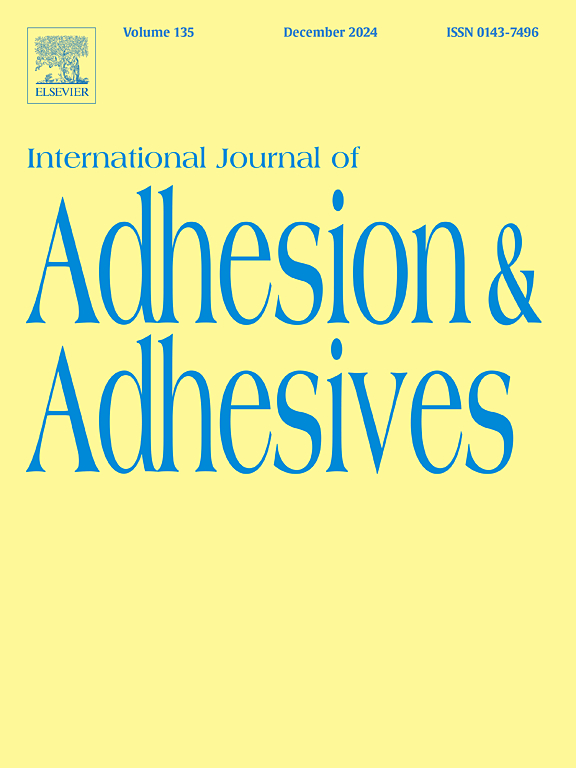Mechanical performance and bond-slip model of adhesively bonded joints between Fe-SMA and concrete
IF 3.2
3区 材料科学
Q2 ENGINEERING, CHEMICAL
International Journal of Adhesion and Adhesives
Pub Date : 2025-06-07
DOI:10.1016/j.ijadhadh.2025.104085
引用次数: 0
Abstract
The vast scale of reinforced concrete structures in civil engineering, combined with their ongoing aging and damage, has led engineers and researchers to propose numerous reinforcement and repair solutions. In recent years, iron-based shape memory alloy (Fe-SMA), as a low-cost, self-prestressing intelligent material, has been demonstrated as a competitive alternative to traditional reinforcement materials such as steel and carbon fiber reinforced polymer (CFRP), exhibiting significant potential in structural strengthening applications. When using Fe-SMA to reinforce concrete structures, it is crucial to ensure a reliable connection between the two materials for effective load transfer, but research in this area, both experimental and theoretical, remains limited. To investigate the load transfer mechanism and failure criteria of Fe-SMA/concrete adhesively bonded joints (BoJs) under shear forces, shear tests are conducted on 20 sets of bonded joint specimens composed of Fe-SMA plates (FSPs) and concrete blocks. The effects of adhesive layer thickness (ALT), bond length (BL), and structural adhesive type on the mechanical performance of these joints are analyzed. Besides, this study proposes the bond-slip model of bonded joints between Fe-SMA and concrete in structural reinforcements, laying a experimental and theoretical foundation for promoting the reinforcement utilization of Fe-SMA in civil engineering, especially for concrete structures.
Fe-SMA与混凝土粘结接头力学性能及粘结滑移模型
土木工程中钢筋混凝土结构的巨大规模,加上它们不断老化和损坏,导致工程师和研究人员提出了许多加固和修复方案。近年来,铁基形状记忆合金(Fe-SMA)作为一种低成本、自预应力智能材料,已被证明是传统增强材料(如钢和碳纤维增强聚合物(CFRP))的有竞争力的替代品,在结构加固应用中表现出巨大的潜力。在使用Fe-SMA加固混凝土结构时,确保两种材料之间的可靠连接以实现有效的荷载传递是至关重要的,但在这一领域的实验和理论研究仍然有限。为研究Fe-SMA/混凝土粘接节点在剪切作用下的荷载传递机制和破坏准则,对20组由Fe-SMA板与混凝土块组成的粘接节点试件进行了剪切试验。分析了粘结层厚度(ALT)、粘结长度(BL)和结构粘结类型对接头力学性能的影响。此外,本研究提出了结构钢筋中Fe-SMA与混凝土粘结缝的粘结-滑移模型,为促进Fe-SMA在土木工程特别是混凝土结构中的钢筋利用奠定了实验和理论基础。
本文章由计算机程序翻译,如有差异,请以英文原文为准。
求助全文
约1分钟内获得全文
求助全文
来源期刊

International Journal of Adhesion and Adhesives
工程技术-材料科学:综合
CiteScore
6.90
自引率
8.80%
发文量
200
审稿时长
8.3 months
期刊介绍:
The International Journal of Adhesion and Adhesives draws together the many aspects of the science and technology of adhesive materials, from fundamental research and development work to industrial applications. Subject areas covered include: interfacial interactions, surface chemistry, methods of testing, accumulation of test data on physical and mechanical properties, environmental effects, new adhesive materials, sealants, design of bonded joints, and manufacturing technology.
 求助内容:
求助内容: 应助结果提醒方式:
应助结果提醒方式:


